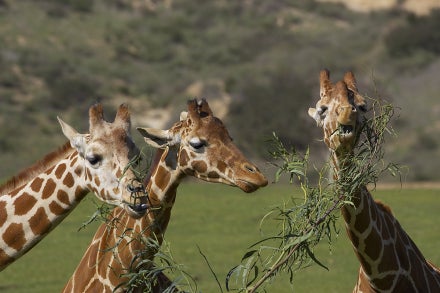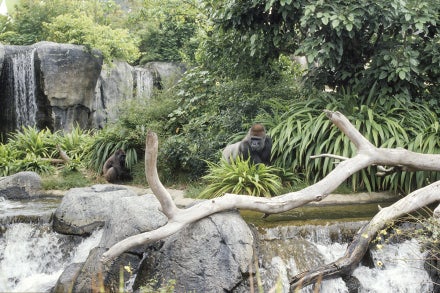FOR IMMEDIATE RELEASE
Feb. 8, 2021
CONTACT:
San Diego Zoo Global
Public Relations
619-685-3291
WEBSITE:
SanDiegoZooGlobal.org
NEWS RELEASE
Study Sheds Light on Unique Social Character of Forest Elephants
Social Dynamics of Little-understood Elephant Species May Hinge on Resource Abundance
A new study led by a San Diego Zoo Global scientist offers rare insights into the unique social character of forest elephants, the least understood of the world’s three currently existing elephant species.
Limited access to food in the central African forest probably affects why females of this species form smaller family units than other elephants, according to the study, published in the journal Animal Behaviour in December 2020. The research was based on intensive long-term monitoring of the population by Andrea Turkalo, as a scientist with the Wildlife Conservation Society. The analysis was done in tandem with Colorado State University, the Smithsonian Conservation Biology Institute and Cornell University.
Forest elephants inhabit central Africa, splitting their time between dense forest and clearings called bais. In the forest, they live in small family groups — often just a mother and her dependent offspring — with older elephants apparently not acting as social hubs between families as is the case in savanna elephants. This may be because in dense forests, they subsist on limited nutrients provided by trees that produce fruit for a short period of time. But forest elephants congregate in larger groups when they visit bais where resources are abundant. Bais allow elephants to interact with a much wider network of elephants than they are found traveling with in the forest.
“This species is under considerable threat, but we know comparatively little about them,” said Shifra Goldenberg, Ph.D., a research fellow in Population Sustainability at San Diego Zoo Global. “Baseline information on their social behavior can help us understand how threats like ivory poaching may impact them.”
The researchers examined a data set of elephant sightings in the Central African Republic from 1995 to 2010. The sightings were made from an observation platform as the elephants entered and exited a forest clearing called Dzanga Bai. Forest elephants are relatively difficult to study because of the dense growth in the forests where they spend most of their time.
“Forest elephant populations have declined severely,” Turkalo said. “Years of observation in a unique population offer us the first in-depth look into the social lives of these reclusive animals, highlighting the close bonds between mothers and their offspring that can be maintained for decades.”
About San Diego Zoo Global
As a leader in conservation, the work of San Diego Zoo Global includes on-site wildlife conservation efforts (representing both plants and animals) at the San Diego Zoo, San Diego Zoo Safari Park, and San Diego Zoo Institute for Conservation Research, as well as international field programs on six continents. The work of these entities is made accessible to over 1 billion people annually, reaching 150 countries via social media, our websites and the San Diego Zoo Kids network, in children’s hospitals in 12 countries. The work of San Diego Zoo Global is made possible with support from our incredible donors committed to saving species from the brink of extinction.
###



